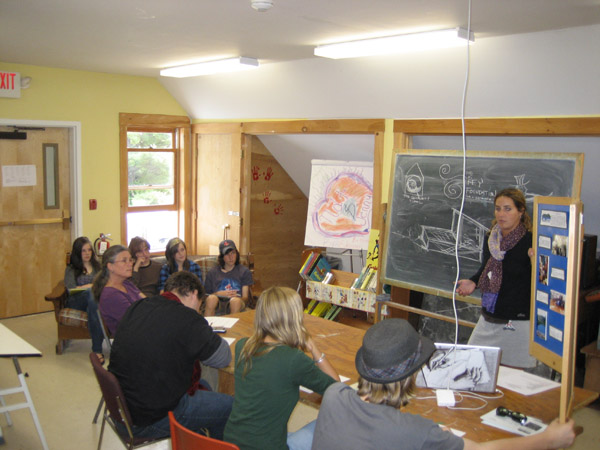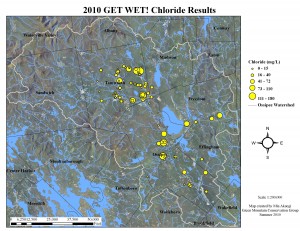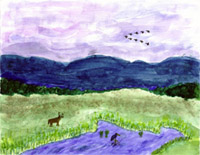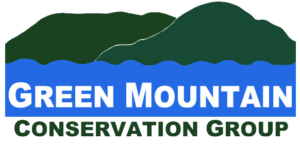GMCG’s Young Sapling Page
Share your art work and written projects here!
Watershed Workbooks for the Ossipee Watershed schools in Effingham, Freedom, Madison, Ossipee, Sandwich and Tamworth are a continuous work in progress. In 2010, GMCG was funded by the Dorr Foundation and New Hampshire Charitable Foundation to start it’s work with local schools, teachers, students, volunteers, and partner organizations to develop the workbook. The focus of the workbook is watershed-specific education, data collection, service learning and field-oriented activities and presentations that encourage watershed stewardship and community service. Workbook activities are correlated to the NH state science standards, and cover multiple disciplines including art and math.
for the Ossipee Watershed schools in Effingham, Freedom, Madison, Ossipee, Sandwich and Tamworth are a continuous work in progress. In 2010, GMCG was funded by the Dorr Foundation and New Hampshire Charitable Foundation to start it’s work with local schools, teachers, students, volunteers, and partner organizations to develop the workbook. The focus of the workbook is watershed-specific education, data collection, service learning and field-oriented activities and presentations that encourage watershed stewardship and community service. Workbook activities are correlated to the NH state science standards, and cover multiple disciplines including art and math.
 Each spring, as part of the School Program Initiative, which includes the development of the Watershed Workbook, over 150 local students from K.A. Brett School, Ossipee Central School, Tamworth Learning Circles, and Mustang Academy/Madison Elementary School participate in a groundwater education program known as GET WET! Through a partnership with Teresa Thornton (University of Maine), GMCG was able to bring GET WET! (Groundwater Education Through Water Evaluation and Testing) to NH and the Ossipee Watershed. Students collect important water quality data that helps create a long-term groundwater quality database for the towns of Effingham, Freedom, Madison, Ossipee, Sandwich, and Tamworth that share the Ossipee Aquifer as a drinking water resource. With the assistance of many community volunteers, students test their own personal well water for pH, chloride, iron, hardness, nitrates, and conductivity.
Each spring, as part of the School Program Initiative, which includes the development of the Watershed Workbook, over 150 local students from K.A. Brett School, Ossipee Central School, Tamworth Learning Circles, and Mustang Academy/Madison Elementary School participate in a groundwater education program known as GET WET! Through a partnership with Teresa Thornton (University of Maine), GMCG was able to bring GET WET! (Groundwater Education Through Water Evaluation and Testing) to NH and the Ossipee Watershed. Students collect important water quality data that helps create a long-term groundwater quality database for the towns of Effingham, Freedom, Madison, Ossipee, Sandwich, and Tamworth that share the Ossipee Aquifer as a drinking water resource. With the assistance of many community volunteers, students test their own personal well water for pH, chloride, iron, hardness, nitrates, and conductivity.
CLICK HERE for more information about GET WET! Funding for the GET WET! program was provided by the United States Department of Agriculture, Lakes Region Fund of the New Hampshire Charitable Foundation, and the Dorr Foundation.
 Summer camps around Lake Ossipee have been helping to monitor the water quality of the lake each year with conservation organization, the Green Mountain Conservation Group (GMCG). Since 2003, Camps Calumet, Cody, Huckins, Robin Hood, Marist and Danforth Bay Campground have helped with GMCG’s monitoring efforts coordinated with the New Hampshire Department of Environmental Services as part of the Volunteer Lake Assessment Program(VLAP). Camps volunteer campers and staff to assist with deep spot sampling three or four times each summer and learn about and track water quality for this long-term monitoring program.
Summer camps around Lake Ossipee have been helping to monitor the water quality of the lake each year with conservation organization, the Green Mountain Conservation Group (GMCG). Since 2003, Camps Calumet, Cody, Huckins, Robin Hood, Marist and Danforth Bay Campground have helped with GMCG’s monitoring efforts coordinated with the New Hampshire Department of Environmental Services as part of the Volunteer Lake Assessment Program(VLAP). Camps volunteer campers and staff to assist with deep spot sampling three or four times each summer and learn about and track water quality for this long-term monitoring program.
Ossipee Lake and its four bays, Leavitt, Broad, Berry, and Lower Danforth Pond, are each sampled near their deepest spots. By using a Kemmerer bottle, a sample is collected at each of the water bodies’ three thermally stratified layers. Samples are analyzed for chlorophyll, chloride, pH, acid neutralizing capacity, turbidity, total phosphorus, and conductivity. In the field, water clarity is also determined by lowering a secchi-disk until it can no longer be seen and measuring that depth. Once a summer, the deep spot is also sampled for phytoplankton. The types of phytoplankton, or microscopic algae which live in the water, can be used as a general indicator of water quality. For more information, visit the NH DES VLAP website.

Anyone is welcome to send in a poem, story, drawing, painting, quote, photo, or other form of writing or artwork. If you would like to share your work inspired by nature, an animal you saw or heard, a person in your community you look up to, or a special place that is meaningful to you, please send your submission by emailing info@gmcg.org or by mailing: Green Mountain Conservation Group, PO Box 95 Effingham, NH 03882.



